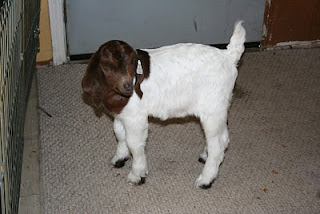This was the question that J asked me today. How much food do we eat in a year? It's a hard question to answer. Not only that, but I knew where he was headed...namely, what would it take for us to grow/raise enough food fod our family to eat in a year?
I tried to look at what we eat in a week, but this isn't accurate because we will not be growing pretzels or corndogs. It boils down to "How much food does a family of five NEED to eat in a year?" Because we really eat much more than is necessary. And the variety of foods that we eat are unnecessary (and false variety) if we really diversified our meals to include more whole foods.
Since I really couldn't answer the question, I decided that maybe I should look at how much of a garden we usually grow and what percentage of that garden supplements our meals.
With that in mind...I usually plant a 20x20 garden. We get a few of each veggie to eat during the harvest season, but nothing overwhelming and certainly not enough to can or freeze (with the exception of zucchini maybe). I rarely see sugar snap peas come in the house as the kids graze them throughout the summer. Tomatoes haven't really produced well and if they do fruit, they end up in a brown paper bag on the counter to ripen after the first August frost kills the vine. I also don't plant a huge variety, nor do I put much thought into where I plant things in the garden. It's just a row of this and a patch of that.
So...we're going to change a few things. J would like to attempt TWO ACRES!!!! I want to go on record stating that I think he is nuts if he thinks we can keep up with that large of a garden, but we can certainly try. I'm thinking maybe we just double our 20x20 - figuring that it will give us some food to preserve - and then multiply that size by however many families we would like to feed in addition to ours...say 10. But that's nowhere close to two acres.
Ok, so I need to think bigger. I have calculated out just the starts that I need to grow inside (tomatoes, peppers, squash) and it comes to 2600 plants. Wow. We'll see. That would cover most of the house with plants.
The next thing we're changing is diversity. I am going to grow some of almost everthing that we can grow in this climate (and a few things that we might not be able to grow). We will have potatoes, tomatoes, squash - winter and summer, pumpkins, watermelon (small heritage variety that should make it here), pole beans, peas, strawberries, broccoli, cabbage, cauliflower, herbs, garlic, onions, lettuce, beets, carrots, radishes, and raspberries. I think that's all...oh, and corn. This way we will have some of a lot of things. Diversifying our garden will diversify our meals (without buying cheez-its).
The third thing we're changing is the planting map. I have been spending a lot of time looking at which plants make good bedfellows. An example that I find fascinating is corn, pole beans, and squash. Planting these three veggies in the same bed allows for some great sharing. The corn is a huge nitrogen eater...the beans are a great nitrogen maker. The beans use the corn stalks as a trellis for growing (without harming the corn apparantly). The squash uses the corn as a shade while it is growing so it can avoid sun scald. Then in turn, it deters weeds from growing between the corn and beans by covering the ground with its own tendrils. Interesting, eh?
I am planting veggies as partners or trios. Some veggies compliment each other with what they give to and take from the soil. Some veggies deter insect predators from eating other more susceptible veggies. Some plants (not just veggies) deter animal predators with their scent. While our garden will not be perfect blocks and rows of certain veggies, it will be working more harmoniously as a habitat. They call this permaculture. We can only try it.












